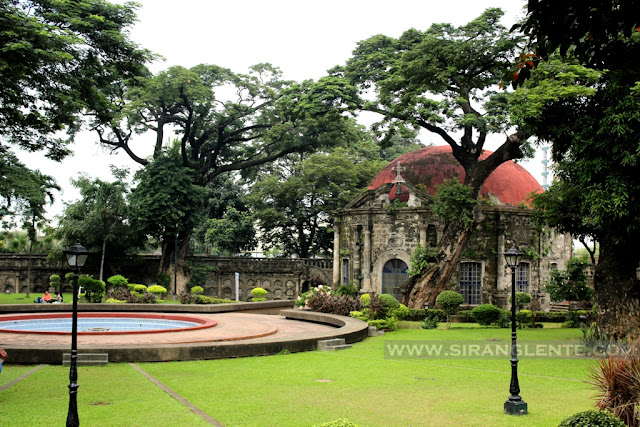
Introduction:
Paco Park is a recreational garden area and served as Manila's municipal cemetery during the Spanish colonial period. This structure was built in the 18th century and was completed in 1822. Its original design was to be a municipal cemetery for the influential and aristocratic Spanish families living in Manila and Intramuros, but it also served as a peaceful dwelling place for those victims of the cholera epidemic.

How to Get to Paco Park:
Used my beep card from LRT 1 Santolan to Recto Station. Walked on the connecting footbridge to Doroteo Jose LRT 1 station. Then, a few minute trip and alighted in UN Station. Walked less than 30 minutes on Padre Fauna Street to Paco Park.
It was easy to locate the correct route using my Google Maps because streets were already established. I was walking near the intersection of Padre Faura and Gen. Luna when I noticed the old walls and an iron gate. Sabi ko sa sarili ko: "sigurado ako, ito na yun." Aba! at sumagot naman ang sarili ko ng: "ito na nga yun, may mga balete na ee." Upon entering the first gate, as instructed by the guard, I proceeded to the cashier's area and paid 10 pesos for the entrance fee.



Upon entering the gate of Paco Park, I was astounded by the old-looking walls with niches. What amazed me while reading the lapida's or tomb stones were the dates and the messages purely written in Spanish, a clear proof that this cemetery was really designed for those aristocratic Spanish families. The weather was friendly, so I was able to walk on the pathway on top of the niches.


The Paco Park Cemetery is composed of two thick walls and is circular in shape. These walls have pathways on top where visitors can walk and see the big picture of Paco Park, similar to the walls of Intramuros. Please note that the lifeless bodies were interred or placed in niches in the hollow walls. The corners and surfaces of the walls contain unique and intricate designs, while the pathways are covered with brown bricks, the same as with Fort Santiago and Intramuros.


In the center of Paco Park, a Roman Catholic chapel, circular in shape, was built dedicated to St. Pancratius. During my visit, the chapel was closed, so I didn't have any idea about the face of its interiors. Paco Park Chapel schedule of masses: Sundays and Holidays, 10AM & 11AM, 5PM & 6PM, and every 12 of the month is 9AM. Wedding arrangements at San Vicente de Paul Parish Office.



One of the special events that happened in Paco Park was when Dr. Jose P. Rizal, a Philippine National hero, was interred in one of the niches in walls after his execution at Bagumbayan, from December 30, 1896 to December 29, 1912. Other historical figures that I always heard from my Araling Panlipunan classes were the three martyred priests, Fathers Jose A. Burgos, Mariano C. Gomes, and Jacinto R. Zamora. According to the black marble marker, they were buried in this hallowed ground after their execution on 17 February 1872 for their complicity in the Cavite Mutiny.



I stayed inside Paco Park for almost two hours and felt the peaceful and cool ambiance, maybe because of the trees and plants surrounding the area OR someone that I didn't see might be with me, that's why it was cold. hahaha. I am just overthinking. I noticed dating couples and partners sitting on the benches. The open ground serves as a stage for students to rehearse. Everything was organized and in place; I noticed that carpenters were repairing some of the destroyed niches and making sure that whatever was inside the niches was well-preserved and secured.
